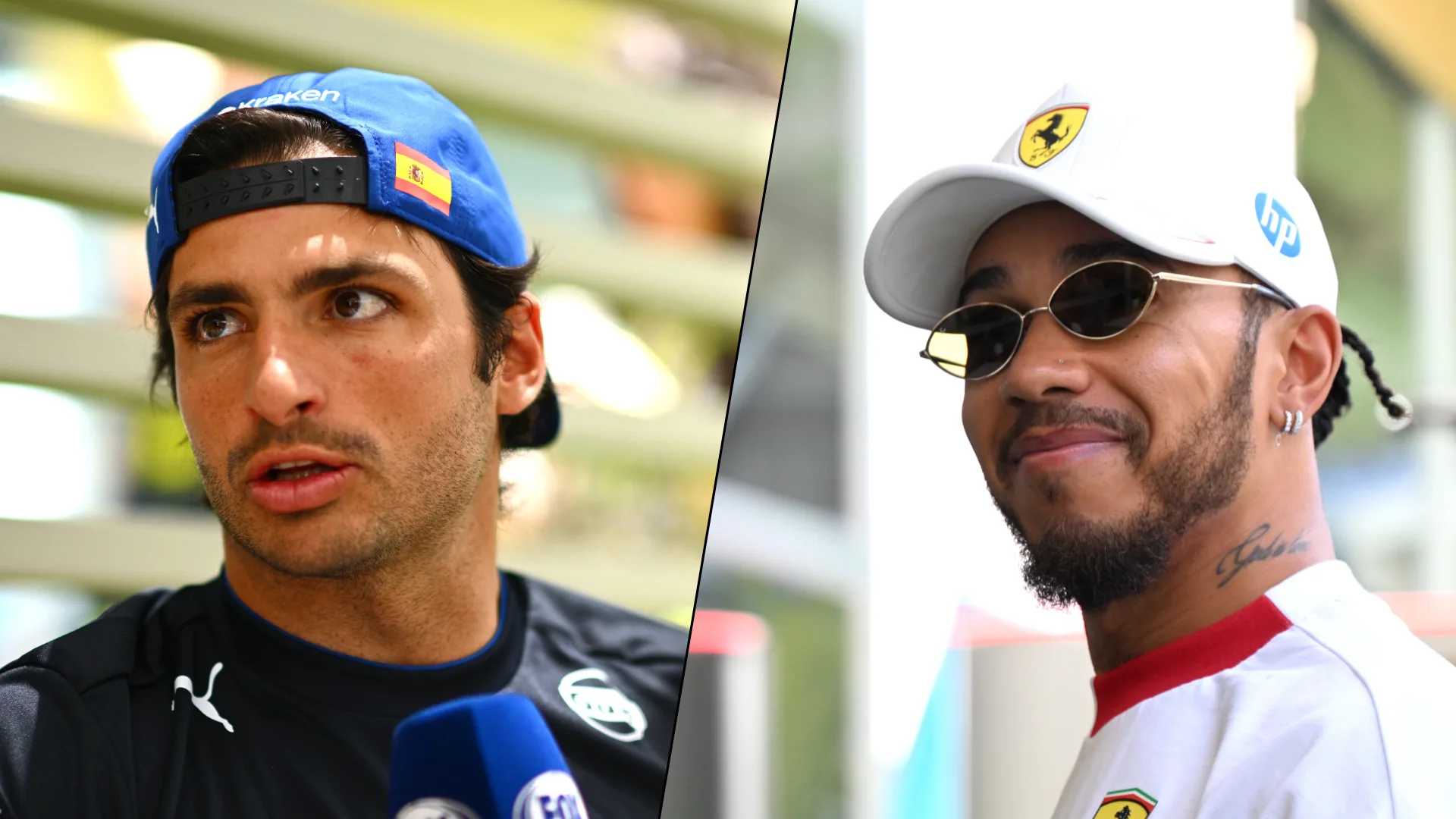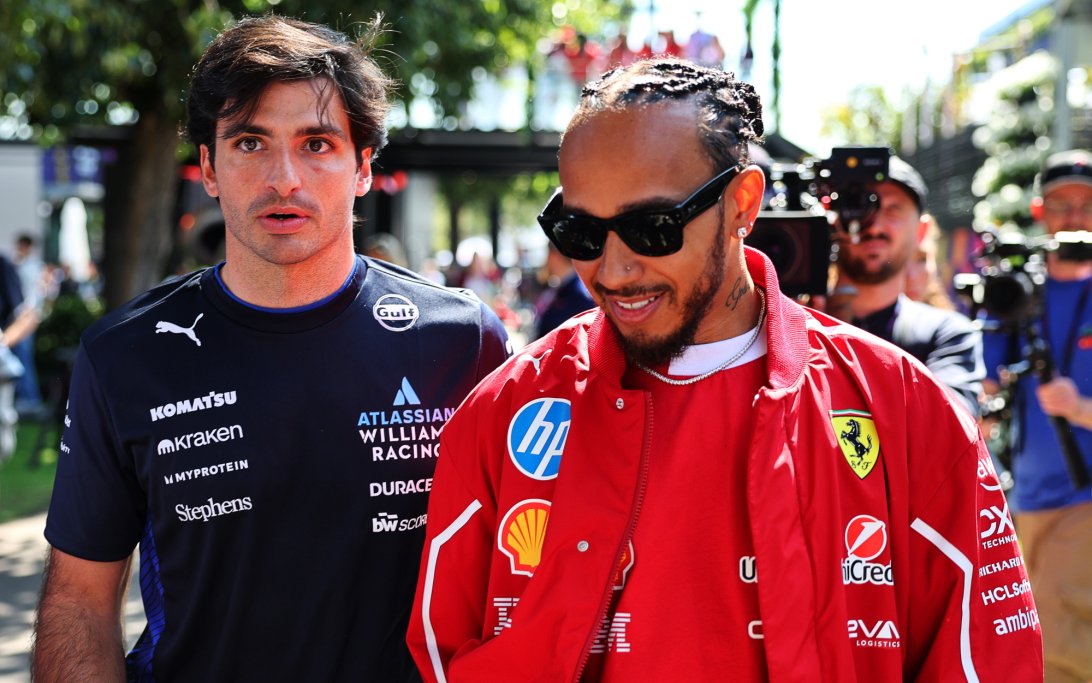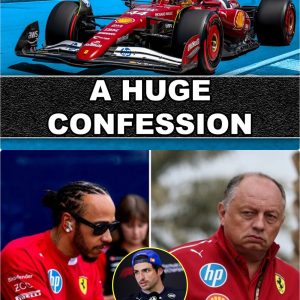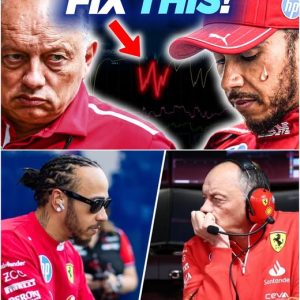The world of Formula 1 is no stranger to high drama and shocking twists, but the unfolding saga at Scuderia Ferrari involving Lewis Hamilton and Carlos Sainz is threatening to become one of the most compelling and unpredictable narratives in recent memory.
What was heralded as a dream partnership between the sport’s most successful driver and its most iconic team is rapidly souring into a public and painful nightmare.
After 14 races in the legendary scarlet overalls, the seven-time world champion remains without a single podium finish, a statistic that is as startling as it is concerning.
The palpable frustration emanating from Hamilton, who at one point damningly referred to himself as “useless,” has ignited a firestorm of speculation about his future, his long-term commitment, and the very viability of this much-hyped union.

The tension reached a boiling point during the Hungarian Grand Prix weekend, where a visibly dejected Hamilton, after a dismal qualifying session, could not hide his profound disappointment. His candid self-criticism was more than just a fleeting moment of frustration; it was a window into the deeper struggles of a champion grappling with a car that seems alien to his touch and a team environment he is still struggling to navigate. His subsequent hints at internal chaos within the Maranello-based outfit have only added fuel to the fire, painting a picture of a team in disarray and a driver feeling increasingly isolated. This is not the triumphant final chapter Hamilton envisioned for his storied career, but rather a grueling and unforgiving ordeal that is testing his resolve in unprecedented ways.
Compounding the on-track woes is a contractual situation that appears to be ironclad. Reports suggest Hamilton is locked into his Ferrari deal until at least the end of the 2026 season, with an option for a further year. While contracts in Formula 1 are notoriously complex, the financial and legal ramifications of an early separation would be monumental for both parties. Yet, the persistent lack of performance and the growing friction have led insiders to whisper about the unthinkable: a mutual parting of ways. If the relationship continues to deteriorate, could a scenario where both Hamilton and Ferrari agree to cut their losses become a genuine possibility? In the high-stakes world of F1, where results are everything, pride and prestige can only mask the reality of failure for so long.
Into this swirling vortex of uncertainty steps a familiar figure: Carlos Sainz. The Spaniard, who was unceremoniously ousted from his Ferrari seat to make way for Hamilton, could be on the cusp of a sensational return. The irony is not lost on anyone who follows the sport. Sainz, a driver who consistently delivered for Ferrari, securing multiple race wins and earning the respect of the Tifosi, was collateral damage in the team’s blockbuster pursuit of Hamilton. Former Sky F1 pundit Johnny Herbert has been one of the most vocal proponents of the theory that a split between Hamilton and Ferrari could, and should, pave the way for Sainz to reclaim his place in the team at the end of 2025.

Sainz himself has admitted to being “blindsided” by the news of Hamilton’s arrival, a brutally honest admission that highlighted the often-ruthless nature of the driver market. Despite his strong performances and his clear desire to stay with the team, he was left to find a new home. That new home became Williams, where he signed a multi-year deal intended to see him through to the new regulations in 2026. However, the rumor mill has been in overdrive with suggestions that his contract contains an escape clause, a provision that would allow him to leave if a front-running team came calling. It’s a tantalizing prospect, and one that Sainz has done little to quell, openly stating that he would not rule out a return to the team that he still holds in high regard.
The difficulties Hamilton is facing are not just a matter of bad luck; they appear to be rooted in a fundamental disconnect between his driving style and Ferrari’s design philosophy. Ferrari Team Principal, Fred Vasseur, has conceded that the team may have underestimated the scale of the challenge Hamilton would face in transitioning from the Mercedes ecosystem, where he had been embedded for nearly two decades. Everything from the feel of the brakes to the car’s setup philosophy is different at Ferrari, and Hamilton, unlike the more adaptable Sainz, has struggled to find his rhythm. It is a stark reminder that even for a driver of Hamilton’s immense talent, adaptability is key. His inability to find that sweet spot has led to inconsistent results and these public outbursts of self-doubt.

As the season wears on, every race weekend becomes a new referendum on the Hamilton-Ferrari partnership. While the team insists it is working tirelessly to tailor the car to his needs, the clock is ticking. The pressure is mounting, not just from the media and the fans, but from within the team itself. Charles Leclerc, Hamilton’s highly-rated teammate, has consistently outperformed the Briton, further highlighting the extent of his struggles. The dream of Hamilton leading Ferrari back to championship glory is fading fast, replaced by a harsh reality that no one could have predicted.
The question now is not if, but when, the breaking point will be reached. Will Hamilton find a way to turn his fortunes around and silence the critics, or will the weight of expectation and the relentless pressure lead to an early and acrimonious divorce? And if that happens, is Carlos Sainz truly the most logical and deserving replacement? The answers to these questions will undoubtedly shape the landscape of Formula 1 for years to come, providing a dramatic and emotionally charged storyline that will keep fans captivated. The tale of a struggling champion, a scorned but talented replacement, and a team in turmoil is far from over; in fact, it may just be beginning.





